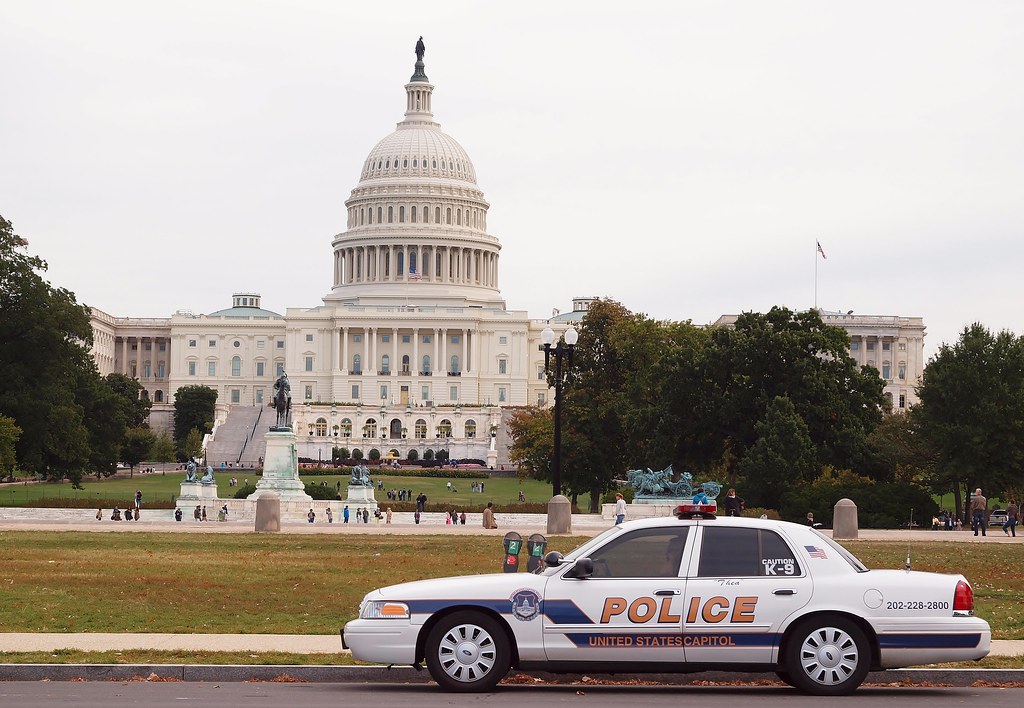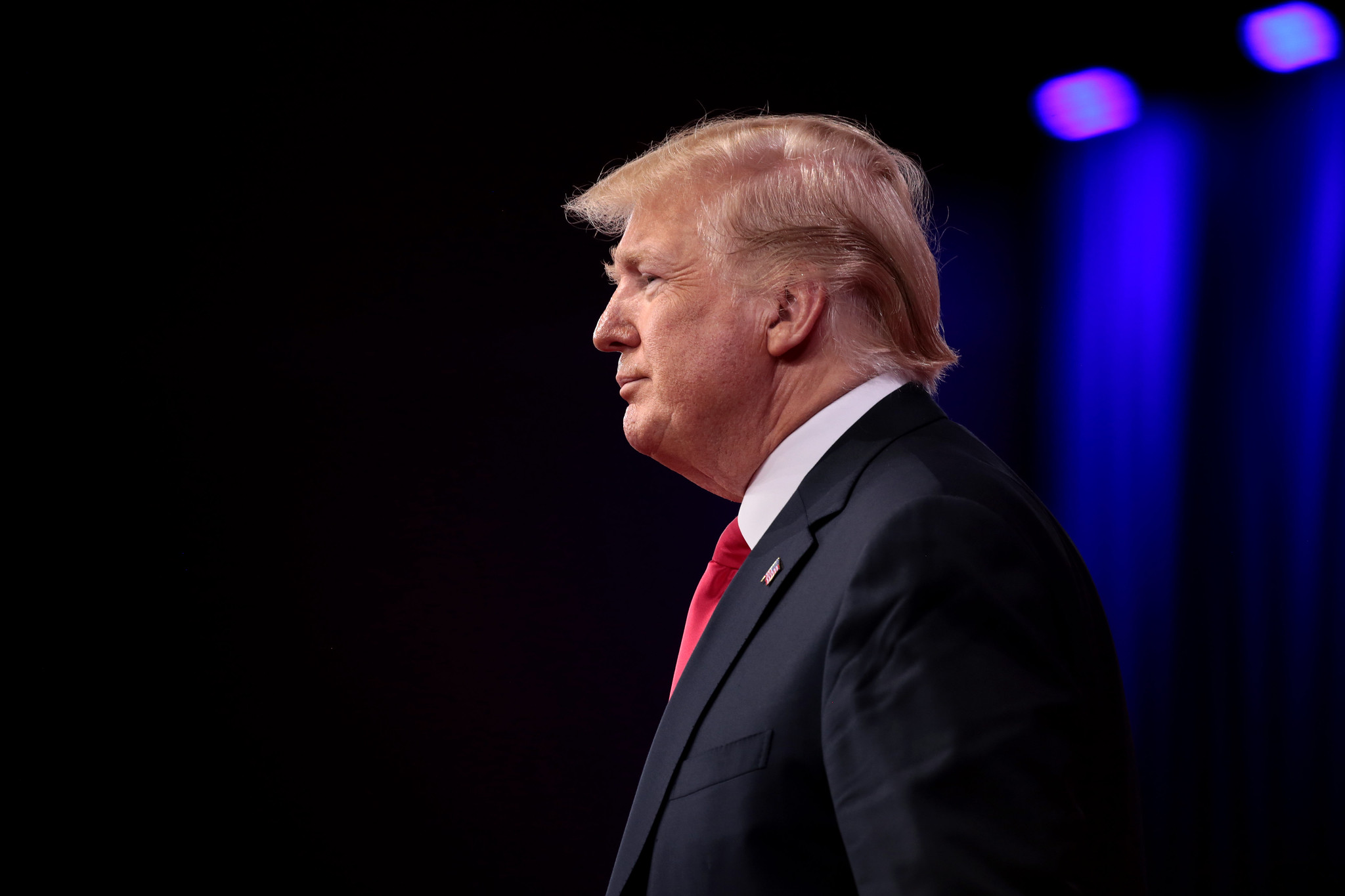Using Qui Tam Statutes to Check Unconstitutional Exercises of Executive Power
The Supreme Court has severely curtailed—and in many cases effectively eliminated—the ability to sue federal officials to vindicate constitutional rights. Congress can force courts to entertain these suits by enacting statutory qui tam remedies.

Published by The Lawfare Institute
in Cooperation With

On June 1, police, along with the National Guard, rammed protestors and hit them with shields and batons to clear a path through Lafayette Square so that President Trump could make his way to St. John’s Episcopal Church. Law enforcement also launched pepper balls, smoke canisters, rubber bullets and flash-bang shells on the crowds. Three days later, several protestors who had been at the park, along with the American Civil Liberties Union and other organizations, filed a lawsuit against Trump, Attorney General William Barr, and other federal officials, alleging that the officials’ acts violated the First and Fourth Amendments. But recent Supreme Court precedent will likely make their constitutional claims difficult to win.
The Supreme Court is increasingly closing off courts from hearing claims regarding unconstitutional exercises of executive power. In its recent decision in Hernandez v. Mesa, the court held that a family had no cause of action for Fourth and Fifth Amendment violations that resulted in their son’s death. Coupled with the Supreme Court’s increasingly narrow standing doctrine and expansive doctrine of qualified immunity, the high court is effectively rendering it impossible to hold executive officials accountable for constitutional rights violations in the courts.
Of course, the executive branch itself has tools to discourage wrongdoing, but it often refuses to police itself. But the legislative branch can weigh in, too.
Congress has the power to enable litigants to hold executive officials to account. Some have suggested Congress enact a Bivens statute—but another option would be to enact a set of qui tam statutes, which impose fines on individuals who violate legal obligations and permit any person (known as a “relator” or “informer”) to sue to enforce the fine.
Barriers to Judicial Vindication of Constitutional Rights
On Feb. 25, the Supreme Court handed down its decision in Hernandez v. Mesa. The case arose when U.S. Border Patrol Agent Jesus Mesa killed Sergio Adrián Hernández Güereca, a 15-year-old Mexican national, in a cross-border incident. Hernández had just run across the border back onto Mexican soil when Mesa, standing in the U.S., shot and killed him.
Hernández’s parents sued Mesa, seeking damages under the Supreme Court’s Bivens doctrine. In Bivens v. Six Unknown Federal Narcotics Agents, the high court held that there is a right to sue officials for damages when they violate the Constitution, unless there are “special factors counseling hesitation” or Congress has provided an “equally effective” remedy.
Bivens involved alleged violations of the Fourth Amendment, and the court subsequently expanded the Bivens holding to claims under the Fifth and Eighth Amendments in two other cases in 1979 and 1980. Since then, however, there have been no Supreme Court cases upholding a Bivens action. In 2016, the court emphasized that it will generally refuse to imply causes of action against federal officials for constitutional violations.
Now, in Hernandez, the Supreme Court held that Hernández’s parents’ claims for damages under the Fourth and Fifth Amendments were not cognizable under Bivens and its progeny. Justice Samuel Alito, writing for the majority, emphasized that the court would require a “clearer manifestation of congressional intent” to recognize a damages remedy when the constitutional text does not explicitly provide for one. The decision in Hernandez signals a significant curtailment of the availability of Bivens damages, to the point where Bivens may be all but extinguished as an option. Justice Clarence Thomas stated as much in his concurrence, arguing that “the time has come to consider discarding the Bivens doctrine altogether.” Justice Ruth Bader Ginsburg dissented, arguing that there was “no good reason why Hernández’s parents should face a closed courtroom door.”
The erosion of Bivens is not the only hurdle for litigants seeking to use the courts as a check on misconduct by executive officials. The Supreme Court’s current standing doctrine makes it difficult to obtain injunctive relief or to address widespread policies that injure many individuals at once. To establish standing, individuals must allege that their injury is imminent or likely if they are seeking an injunction. Relatedly, the injunction must be able to redress the injury—a future injury must be sufficiently likely to recur. Accordingly, those who seek remedies for past injuries generally will have no standing to get an injunction against future conduct. Individuals are also barred from asserting “generalized grievances.” The ban on generalized grievances often bars litigants from pursuing widely shared public interests, and the Supreme Court has held that even Congress cannot typically create standing to litigate generalized grievances in the absence of a particularized injury.
Finally, the Supreme Court’s official immunity doctrine poses yet another barrier to holding executive officials accountable even if a plaintiff has standing and a plausible Bivens claim surviving Hernandez. Federal sovereign immunity doctrine holds that no one can sue the United States without its consent—sovereign immunity is thus pleaded around by suing officers. These officers, however, will often have immunity from the suit. Though official immunity does not apply for injunctions against executive or administrative action—with minor complications involving the president—those suing for an injunction for a past harm will not have standing to begin with. And getting around official immunity is extremely difficult for those seeking damages.
Generally, executive officials receive qualified immunity and are immune from suit unless they violate clearly established statutory or constitutional rights that a reasonable person would have known about. This has also become a high standard to overcome. The Supreme Court has since stated that the law is clearly established in its application to particular facts when “every reasonable official” would know that the conduct violates the law. In two recent police misconduct cases, the high court summarily reversed lower courts, stating that the law was not clearly established as applied to the facts. For example, in Kisela v. Hughes, police officers shot a woman four times, as the woman was holding a knife about six feet away from another woman. The law was clear that officers could not use excessive force, but the court found that it was not clearly established with sufficient specificity as to the facts of this case.
There is also no supervisory liability in Bivens actions. All government officials, no matter what their titles, are liable only for their own misconduct. Mere knowledge of others’ misconduct is not enough. The Supreme Court further made clear that “purpose rather than knowledge” was generally required in all Bivens actions to overcome qualified immunity.
What Congress Can Do
So far, Congress has yet to show an interest in stepping in to address this issue—although momentum may be gathering as Congress considers broader reforms aimed at curtailing police brutality in the wake of nationwide protests. If lawmakers want to take action, there are a few options available to them.
One potential solution to this compounded problem is enacting a federal equivalent of 42 U.S.C. § 1983, which permits individuals to sue anyone, including local governments, who violates a federal constitutional or statutory right under color of state law. Such a statute, sometimes referred to as a Bivens statute, would provide a cause of action for federal law violations committed by state officers. Another potential solution, discussed previously on Lawfare, would be reviving qui tam suits to check executive officials who violate the Constitution. A qui tam statute imposes a fine on someone who violates a specified legal duty and allows any person (traditionally known as an “informer”) to sue to enforce the fine. The successful informer can keep a percentage of the money collected, and the government gets the rest.
Qui tam statutes would also have an added benefit above and beyond a Bivens statute. Any Bivens statute would almost certainly be limited to allowing those directly injured—or their immediate family members in the case of someone who dies—to sue. In contrast, a qui tam statute could permit anyone to sue to enforce the law. That would help ensure that the courts’ availability to hear claims related to constitutional rights violations would not depend on plaintiffs’ means to obtain counsel and file suit. To account for instances where multiple plaintiffs sue, Congress could mirror the False Claims Act, a qui tam statute permitting relators to sue to enforce a forfeiture for those who defraud the federal government, and provide for a “first to file” rule. The False Claims Act’s first-to-file rule provides that when multiple parties file suit, only the first survives.
Qui tam addresses the Supreme Court’s constraints of standing doctrine. Indeed, the court, in an opinion by Justice Antonin Scalia, specifically upheld qui tam informer standing. The court explained that unlike free-standing “procedural rights”—like the one it struck down in Lujan v. Defenders of Wildlife—qui tam statutes effectively assign part of the government’s claim to qui tam informers. Just as other assignees have standing to litigate the claims assigned, informers have standing to enforce the law in the course of seeking to collect their share of the statutory fine.
Congressional provision for qui tam actions to enforce fines for federal officials violating the Constitution also neatly addresses the separation-of-powers concerns justifying the Supreme Court’s curtail of Bivens. In Hernandez, one of Alito’s main concerns in the majority opinion, related to separation of powers, was that Congress has not acted to create a damages remedy. Concluding the opinion, he stated, “When evaluating whether to extend Bivens, the most important question is who should decide whether to provide for a damages remedy, Congress or the courts? ... The correct answer most often will be Congress. ... That is undoubtedly the answer here.” That is exactly what Congress would do by enacting a qui tam statute.
To address the Hernández family’s injuries, Congress could enact a statute proscribing, for example, that “[a]ny federal executive branch official who knowingly violates the Fourth or Fifth Amendment of the U.S. Constitution and whose violation results in death shall be fined X,” and empower both the government and the public to enforce the fine. The statute could specify that a portion of any fine recovered would go to the family of the deceased individual.
In addition to solving the standing and Bivens problems, a qui tam statute also could limit the availability of official immunity. If there were more suits under the qui tam statute that overcame the standing and cause-of-action issues, it is possible that more law would become “clearly established.” As it stands, academics, courts, and others worry that qualified immunity freezes the law—if a court holds that the law is not clearly established first, and does not move on to clarifying what the Constitution requires, the boundaries never get clarified and the law never becomes clearly established. Due to this concern, the Supreme Court has wavered on whether courts should first decide the contours of the law and then confer immunity. In its latest statement on the issue, the Supreme Court said that lower courts “should think hard, and then think hard again” before first deciding there was a right, due to the constitutional avoidance canon. But the high court also said that first defining rights “is sometimes beneficial to clarify the legal standards governing public officials.”
Congress could also enact relatively detailed qui tam statutes that identify the specific prohibited conduct and therefore undermine any argument that the law is not clearly established. For example, it could enact the U.S. Court of Appeals for the Ninth Circuit’s holding in Kisela v. Hughes that “under the Fourth Amendment, a mentally disturbed individual who had committed no known crime, was not acting erratically when encountered by police, and presented no objective threat to officers or third parties may ‘walk down her driveway holding a knife without being shot.’” It could also lower the standard of factual similarity required to show that law was clearly established in excessive force cases such as Kisela, which are inherently fact specific.
***
The Framers created an independent judiciary precisely so that it could check unconstitutional exercises of power by its sister branches. As Alexander Hamilton explained in Federalist #78, it would be the courts’ “duty ... to declare all acts contrary to the manifest tenor of the Constitution void. Without this, all the reservations of particular rights or privileges would amount to nothing.” Yet, in recent years, the Supreme Court’s standing doctrine has hollowed out—in many settings, entirely so—the ability of individuals to bring suit to reign in executive power.
Qui tam statutes offer a way around these legal precedents. By enacting qui tam statutes, Congress would deputize the public to assist in enforcing the law—which is particularly important when it comes to ensuring that the executive branch complies with the law. Experience with other qui tam statutes shows that it is possible to balance the executive branch’s continued authority to enforce the law, while allowing suits by the public to proceed. New qui tam statutes are a natural step toward restoring a critical check and balance that the Framers envisioned.
Disclosure: The author wrote this while working in a law school clinic associated with Protect Democracy, which has represented Lawfare editors Benjamin Wittes, Jack Goldsmith, Scott Anderson and Susan Hennessey on a number of separate matters.





